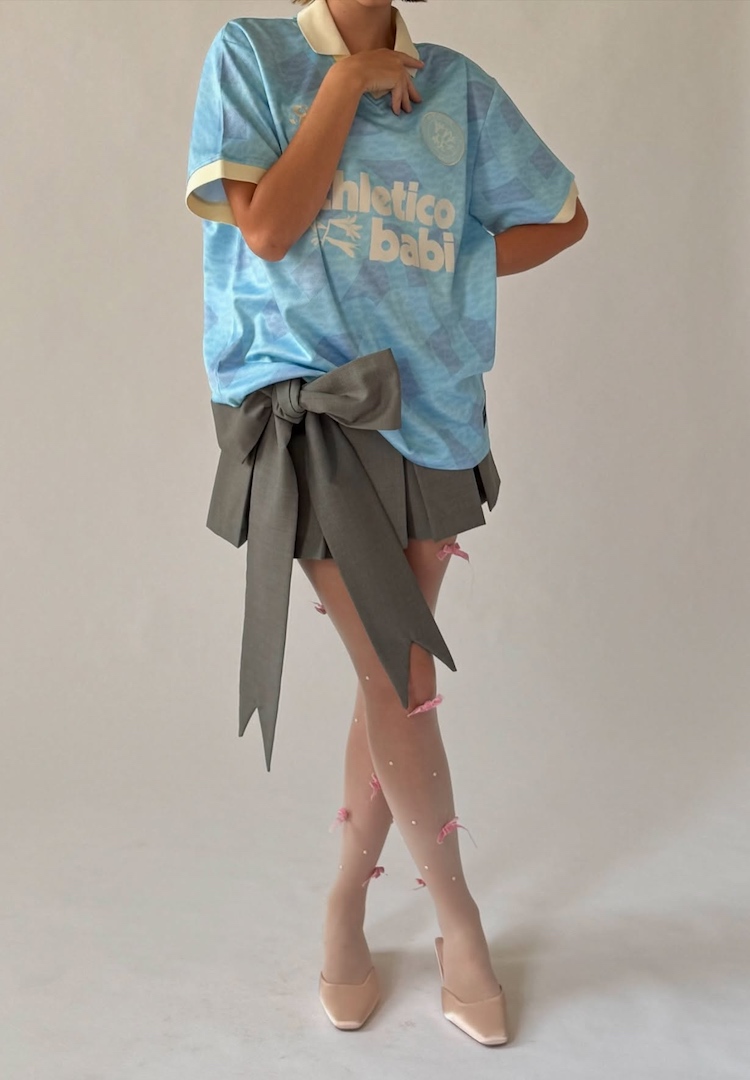Shein is planning more Australian pop-ups, so what does that mean for slow fashion here?
WORDS By Bianca O’Neill
“The question is not so much why the consumer would be interested in a Shein pop-up, but rather why Shein would be interested in holding one, considering it is an entirely online brand.”
Last month, Melbourne fashion lovers saw online, ultra-fast fashion brand Shein grace our city with a physical pop-up store. It was an interesting move, considering a strong few years of increasing interest in sustainability, localisation, and ethics in fashion.
Hell, in the exact same week that Shein popped up in Melbourne, the Australian Fashion Council was holding a press conference in Sydney to announce a new fashion trademark to support local makers.
For more fashion news, shoots, articles and features, head to our Fashion section.
If anything, what the pop-up did do is test the appetite – however covert – for Shein’s brand of fast fashion in the Australian market. When I spoke to a couple of local designers throughout the week at Afterpay Australian Fashion Weel (AAFW), there was a distinct distaste for the brand, but as it turns out, the average consumer did not feel the same.
Mentioning the arrival of Shein to Melbourne in a conversation the week before it opened was met with a surprising level of interest – one girl I spoke to claimed excitedly that she would definitely pop down. “I know it’s bad,” she said to me, “but I do shop on Shein quite a bit… I actually just like a lot of their stuff. The only issue [I have found] is it can be very hit and miss when it arrives.”
It is precisely the ‘hit and miss’ perception of online, ultra-fast fashion that the brand’s pop-up addressed. It was an opportunity for those many thousands of women in Australia who shop Shein’s website to have the rare opportunity to look, touch and try on the garments – to try before they buy.
The question is not so much why the consumer would be interested in a Shein pop-up, but rather why Shein would be interested in holding one, considering it is an entirely online brand. To assume that this was simply a marketing stunt for a multibillion-dollar company that, frankly, doesn’t need the press, would be naïve. It felt like it could also be an opportunity to test-run the appetite for a brick-and-mortar version in Australia.
But would such a thing work in today’s consumer climate? H&M was embraced when it arrived from overseas despite its lack of sustainability credentials, but it already had a physical retail model in place. Topshop, on the other hand, discovered that its own brand couldn’t last the distance, entering voluntary administration in 2017 with debts of around $35 million.
The idea of a brick-and-mortar store was something that Shein played coy about when I spoke to the brand recently about its pop-up activity. However, a brand representative did confirm, perhaps even more interestingly, that its success in Australia has led them to invest in further pop-ups globally.
“We currently have no plans to open physical stores,” a Shein representative explained. “But we are planning more pop-ups globally in 2022 to ensure more opportunities for in-depth connections with our customers.
“We found that many of our followers on social media are from Australia, and we wanted to establish a close emotional connection with them as it has been one of our goals for a long time.”
Emotional is an interesting word to use here. Could this lead to a new wave of interest in fast fashion locally? Or even lead to a permanent Shein presence? One thing is for sure: such an arrival could have a devastating impact on the Australian fashion industry – an industry that is already in dire straits following swift declines in consumer spending and heavy closures during the pandemic.
The few local labels that have survived, and continue to thrive, believe that what Aussie brands offer is not only a superior product when it comes to quality, but also a product that consumers should value over cheap prices and micro-trending pieces.
Diida is one such brand. Dimitria ‘Diida’ Papafotiou, Founder and Creative Director, tells me that creating local jobs is key to the strength of the Australian fashion industry. “I am an advocate for Australian made,” Papafotiou says. “And I respect the design process from sketch, stitch to store. I am also passionate about creating more jobs for Australian fashion and its professional employment industry.
“Diida focuses on contributing to the slow fashion movement and an end to waste… Education is key here, and we need to be present and provide options to consumers that are Australian made, and share with them the story of why we need to support and advocate for Australian labels.”
In response to a question about its impact on the local fashion industry, the Shein representative gave this response: “Shein has partnered and supported 37 emerging designers and artists from Australia as well as producing and showcasing their talented works to worldwide customers through the Shein X program.”
It is perhaps interesting to note here that many of Shein’s critics suggested that the very program it’s referring to here was, in fact, a response to a swag of accusations of design appropriation and plagiarism.
In terms of its environmental impact, Shein responded that it is “committed to encouraging the sustainable development of the fashion industry. We aim to address the industry’s core problem of inventory waste… Our technological collaboration led us to achieve fast sales in mass production and small order volumes. We regularly upgrade traditional production processes via technology to effectively resolve inventory issues and reduce environmental pollution.
“We continue to proactively push the development of responsible fabrics, environmentally-friendly techniques, plastic packaging reduction, carbon elimination in the supply chain, and philanthropy and public events.”
In the end, ultra-fast fashion brands like Shein, and local brands like Diida, may have strongly differing opinions about the future of fashion but what it really comes down to is consumers. Only they can decide who is going to come out on top.
So can Australian shoppers save the local fashion industry? Or will they herald in a new era of damaging fast-fashion consumerism? If the popularity of the Shein pop-up is anything to go by, the answer isn’t going to be so easy.
Bianca O’Neill is Fashion Journal’s Senior Industry Columnist. Follow her at @bianca.oneill.













